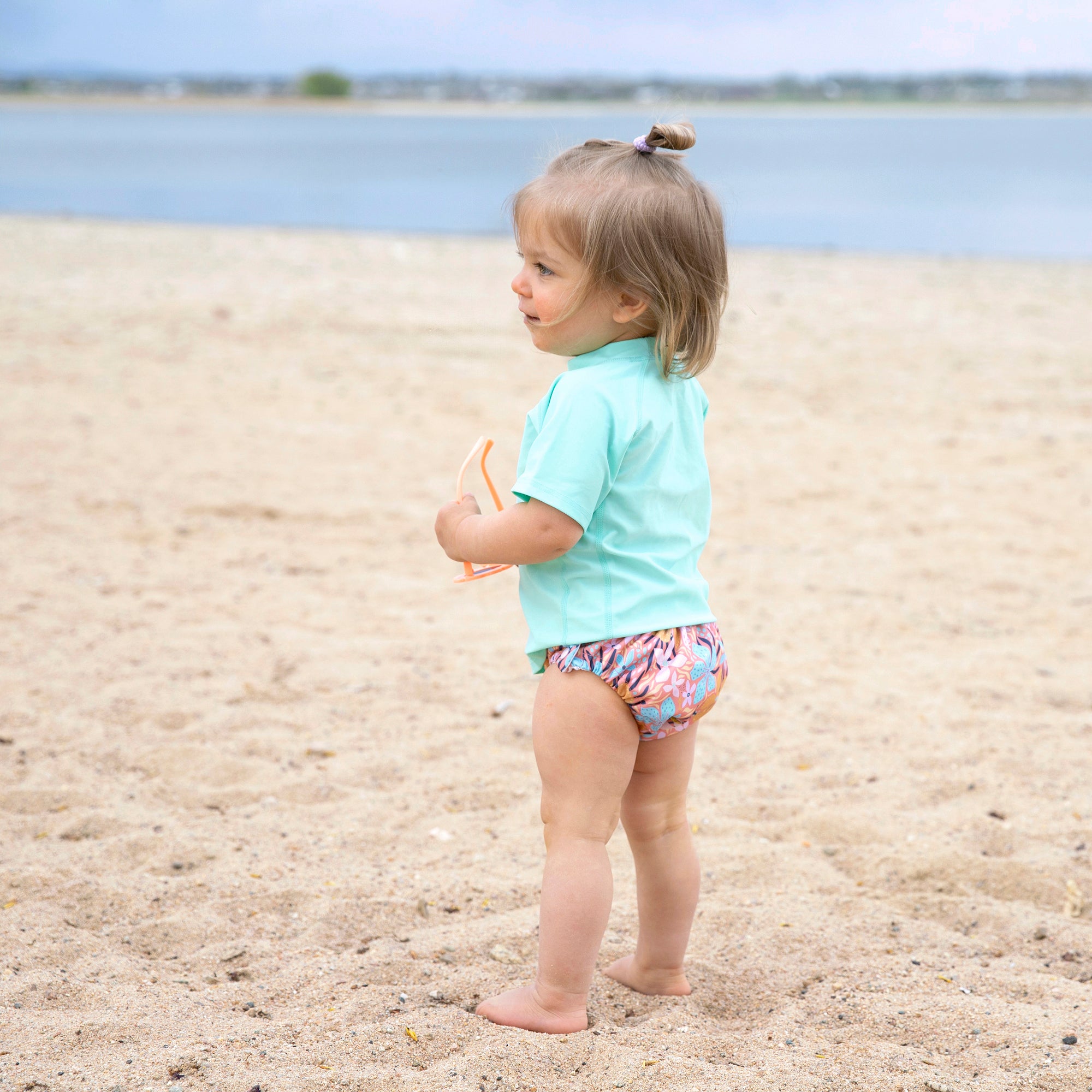Anyone who knows me already knows that my children could never be called “mellow, easy or calm.” In fact, the truth is, they have been the opposite since birth. Both Lauren and Cooper were very colicky for weeks after they were born, only Kate, my middle child, was an easy newborn. But unlike her easy-going infant personality, when Kate got older, she got much hyper, more irritable and more angry. It’s been really, really hard having three kids like this. In fact, for the past couple of years, we’ve been seeking the help of psychiatrists and child psychologists to help us deal with Kate’s irritability, intense tantrums and defiant behavior. We know we have a history of ADHD in the family but Kate seems off the charts. Some of Kate’s meltdowns have been so severe, I’ve contemplated calling the police. I’m not kidding. She’s been so out of control scratching me, kicking, hitting, biting and screaming that I don’t know what to do. She screams that she “can’t stop” and I believe her. She has absolutely no control over herself when it happens and she feels bad afterward. It’s been heartbreaking and confusing to see her going through this. There is truly nothing worse than being unable to find the cause or the cure for your suffering child. Not all people view a raging child with empathy and sadness but as a mother, I do. I feel it's my duty as writer to share this so that other parents seeking answers might help their own children. Here's what we just figured out: This past June we were visiting my parents in Florida and the kids were doing great. Their moods were great, they were swimming and eating lots of fruit popsicles that Grandma had bought. As our two week visit came to an end, Kate’s mood got worse and worse. And two days before we left she had one of those “apocalyptic” meltdowns. It went on for an hour. I felt horrible that my niece and my parents had to witness it. When it was finally over, she fell asleep for over two hours. I cannot even tell you how hard it was to deal with that and to have Cooper screaming for me as well. My parents couldn’t comfort him and certainly no one could help Kate. I had always attributed this kind of meltdown to ADHD and the intense tantrums that go along with it. But this seemed above and beyond and I told my mother it happened on a regular basis. Not daily, maybe not weekly. But sometimes more than once a day and sometimes a lot more than once a week. There was no pattern that I could see between good days and bad days or good weeks and bad weeks. My mother encouraged me to cut out sugar from the kids' diets to see if that would help. I was skeptical but I thought we’d give it a try anyway. It would be a good idea to give the summer a healthy jump start. Two weeks later, we were home and the kids had been pretty much sugar free. The only treats the kids could have were fig cookies and 100% fruit juice popsicles. One day, when I was alone with Kate, she was digging through my purse and found a red Tootsie Pop (my personal favorite). Since her siblings weren't around and there was only one lollipop I told her she could have it. And despite what happened afterward, I’m awfully glad I did. Twenty minutes after finishing her treat, Kate had a severe meltdown over something trivial for over an hour and then fell asleep for two and a half hours. It suddenly clicked. The lollipop. And what had she eaten right before her last meltdown in Florida? Not the fruit popsicles the kids had been eating for most of the week but a second box that we had purchased a few days before we were to leave: the bright red, orange and purple popsicles with nothing in them but dye and sugar. It occurred to me that it might actually be the artificial food coloring and not the sugar that was causing Kate's extreme behavior. I believe that Red #40 affects her the most.
 Like I always do in this sort of situation, I began to research food dyes and behavior. I.Was.Floored. I had briefly wondered at one point if food dyes could play a part in our behavioral challenges but I had ruled them out thinking “We don’t feed our kids red, orange and green cereal ever. Sure we have the occasional treats but that’s candy. It’s not every day. We don’t drink soda or Kool aid or any of that stuff.” What I learned was that we don’t need to. Artificial food dyes are even in things like white frosting (red and yellow!) and mac and cheese, vitamins and medications. They even put artificial colors in ADHD medications even though these dyes have been scientifically proven to make ADHD symptoms worse. Unreal. My theory is that Kate’s behavior was unpredictable because at any given moment she could have little to no dye in her system, a medium amount if she had maybe had an OTC pain/fever reducer and handful or two of M & Ms, or a TON if she had eaten more than one brightly colored popsicle. What really disturbs me is that there is actually science behind this. It’s been proven that food dyes, most especially Red #40, affect most children. But there are some children who have severe reactions. I read blog after blog in which parents shared their own experiences and described the behavior their kids exhibited after eating artificially colored foods. It was like reading about my own life. But more disturbing? Artificial food dyes are illegal in many countries in Europe and what's more, American food companies have taken the artificial dyes out of the foods they sell in Europe but continue to sell them to us here in the United States. Why? Because it's cheaper and it's legal? That's my guess. Kate's behavior is not perfect. She still has ADHD. But her mood swings and irritability have decreased significantly and she now reacts much more typically to small triggers that used to cause huge tantrums. When tantrums do happen, they don't last nearly as long. I'll leave you with my two biggest reactions on the subject: 1) Phew! I'm glad we figured that out! 2) How in the world is this stuff legal in the United States? How do you feel about giving your kids artificially colored foods? Do they react? Do you?
Like I always do in this sort of situation, I began to research food dyes and behavior. I.Was.Floored. I had briefly wondered at one point if food dyes could play a part in our behavioral challenges but I had ruled them out thinking “We don’t feed our kids red, orange and green cereal ever. Sure we have the occasional treats but that’s candy. It’s not every day. We don’t drink soda or Kool aid or any of that stuff.” What I learned was that we don’t need to. Artificial food dyes are even in things like white frosting (red and yellow!) and mac and cheese, vitamins and medications. They even put artificial colors in ADHD medications even though these dyes have been scientifically proven to make ADHD symptoms worse. Unreal. My theory is that Kate’s behavior was unpredictable because at any given moment she could have little to no dye in her system, a medium amount if she had maybe had an OTC pain/fever reducer and handful or two of M & Ms, or a TON if she had eaten more than one brightly colored popsicle. What really disturbs me is that there is actually science behind this. It’s been proven that food dyes, most especially Red #40, affect most children. But there are some children who have severe reactions. I read blog after blog in which parents shared their own experiences and described the behavior their kids exhibited after eating artificially colored foods. It was like reading about my own life. But more disturbing? Artificial food dyes are illegal in many countries in Europe and what's more, American food companies have taken the artificial dyes out of the foods they sell in Europe but continue to sell them to us here in the United States. Why? Because it's cheaper and it's legal? That's my guess. Kate's behavior is not perfect. She still has ADHD. But her mood swings and irritability have decreased significantly and she now reacts much more typically to small triggers that used to cause huge tantrums. When tantrums do happen, they don't last nearly as long. I'll leave you with my two biggest reactions on the subject: 1) Phew! I'm glad we figured that out! 2) How in the world is this stuff legal in the United States? How do you feel about giving your kids artificially colored foods? Do they react? Do you?








As a child, I was terribly allergic to most food dyes; my brother was less so.
As for the ADHD, have you had her tested for other food sensitivities or allergies? There is a huge amount of scientific data coming out showing that especially gluten sensitivity causes ADD/ADHD and that removing these foods from the diet resolves the behaviour problem, similarly to what you have discovered with the dyes.
Interesting info. I want our little guy to appreciate the food he gets to eat and teach him to avoid all the processed foods.
What is the point of having an FDA if they can’t even regulate basic food safety? Urghh! Thanks for alerting us.
I am not to the age of feeding solids yet, but I have seen the affects of red dye #40 in other kids and even in my best friends husband and its scary. He gets extremely violent and hysterical. After about an hour or so he crashes for a couple hours and when he wakes up he has a migraine and doesn’t really remember much of his violent outburst. It’s scary and very confusing like you said that their is science that proves the food dyes are “bad” yet they continue to use them. It’s so frustrating. I’m so glad you finally figured out your daughters problem.
My son is pretty difficult also. I never thought about this but will check it out.
You're viewing 6-10 of 30 comments